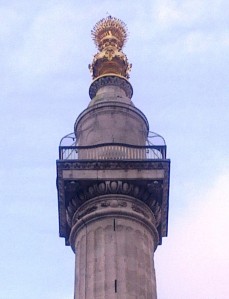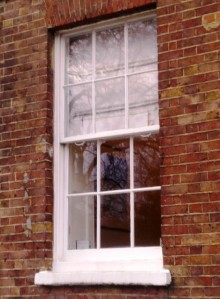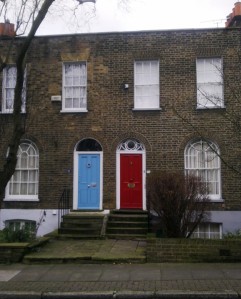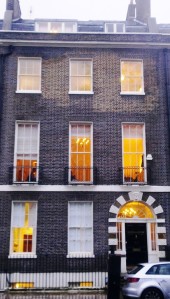“London was but is no more,” lamented the diarist John Evelyn in 1666 after watching the flames of the Great Fire consuming the medieval, and mostly timber-framed, buildings of the City. The 1667 Act ‘For The Rebuilding of London’ wasn’t the first attempt to control building construction – thatched roofs had been banned by the Mayor in 1212 – but it was the start of serious efforts to get a grip on standards, materials, fire safety and sanitation. It was also the first Act to appoint surveyors (“…discreet and intelligent persons”) to ensure that its requirements were followed. From then on, London houses had to be built in brick or stone, the number of storeys and the thicknesses of walls were specified and streets had to be wide enough to serve as fire-breaks. Projecting upper floors – known as ‘jetties’ – had been a common feature of houses in the old city and had enabled the fire to spread rapidly from street to street. Jetties were now banned by the 1667 Act.


Further Building Acts followed in 1707 and 1709, implementing more of the lessons learned from The Great Fire. Projecting wooden eaves were banned and roofs disappeared behind raised parapet walls. For terraced houses, party walls had to be continued through the roof – forming an upstanding barrier to the spread of fire. Then, in 1774, came comprehensive legislation covering the whole built-up area of London, not just Westminster and the City. This Act was aimed at preventing poor quality construction and reducing the spread of fire from house to house. Before 1709, London’s front door and window frames could be flush with the outside face of the brickwork. After 1709, timber door and window frames had to be set back by four inches – the thickness of one brick – and windows had to have a projecting sill. After 1774, window frames had to be actually recessed into the brickwork so that most of the sash box was hidden.

For the first time, houses were ‘rated’ according to value and floor area. There were four ‘rates’, each with its own specification for foundations, external walls and party walls. The largest houses were, of course, ‘First Rate’. They had four storeys above a basement and over 900 sq ft of floor space. ‘Third Rate’ houses faced principal streets. The ‘Fourth Rate’ offered less than 350 sq ft and were confined to minor streets because Georgian street widths were regulated in relation to the heights of the adjacent buildings. The ‘rating’ system coupled with the fear of fire created whole neighbourhoods of flat-fronted, brick terraces. In its day, the 1774 Act was known as ‘The Black Act’ because it was so onerous and prescriptive. It was criticised for producing uniform and repetitive terraces – condemned by Victorian commentators for ‘too much similarity.’ Today, the same Act should be celebrated for giving us a rich legacy of polite, harmonious, Georgian urban architecture.


Interesting facts!
I have not so much heard this history before. It’s really a refreshing time here!
LikeLike
Amazing!
It’s always good to learn about the history of ones front door sometimes. It makes the obsession stronger.
Good job here!
LikeLike
Excellent!
I live this and I think I’m gradually falling in love with your blog though I have not gotten any door from you yet.
I will be considering that soon.
LikeLike
Got the picture of the evolution. Making sense anyway. Hopefully Bespoke has their own way of integrating the ancient styles and trends into latest front door architecture
LikeLike
That’s a whole lot of history. At least I have an idea now. Wish to have more on other house features..lol.
LikeLike